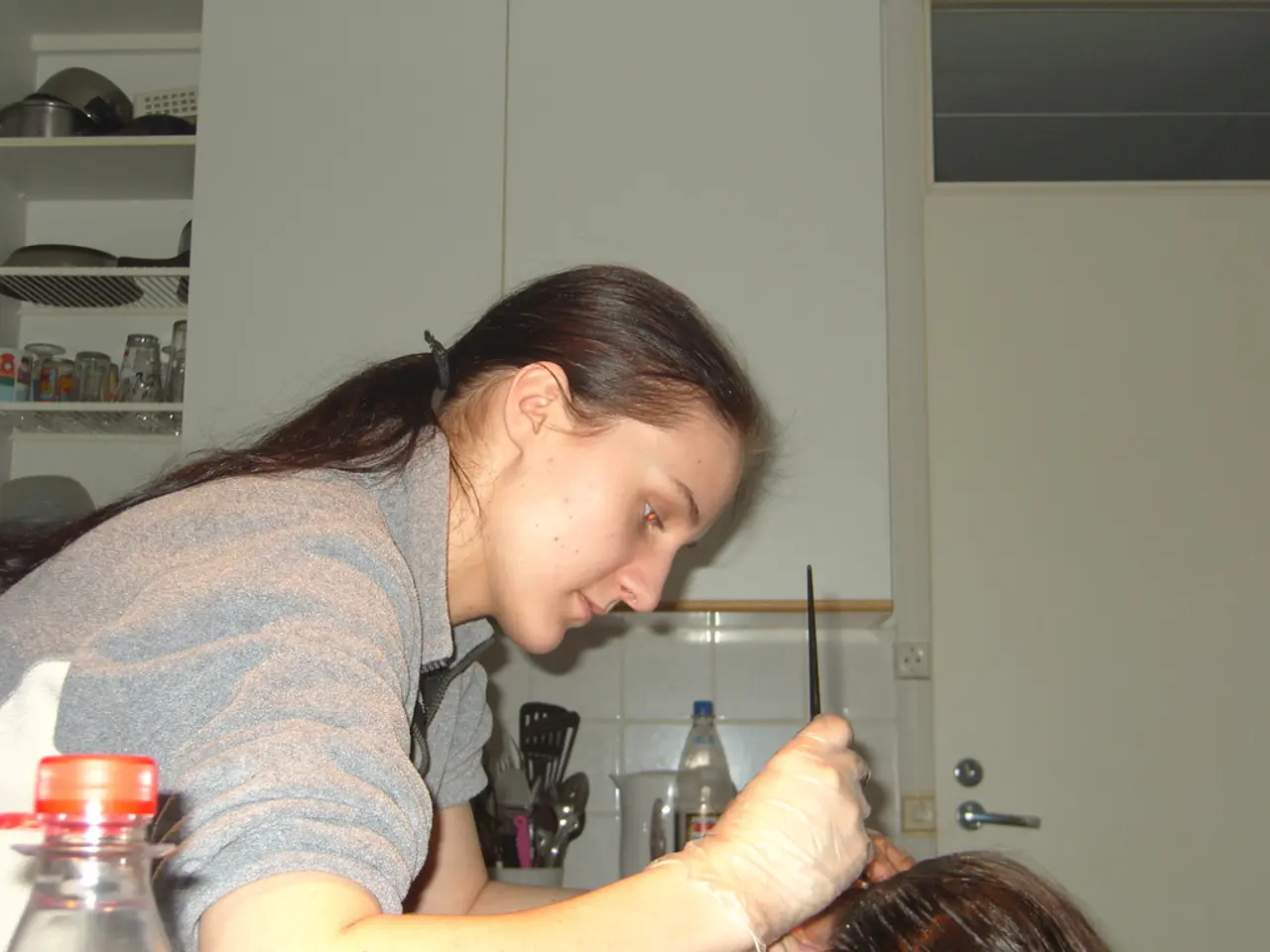Uncovering Methods to Minimize Unwanted Body Hair Regrowth
In the realm of personal grooming, hair removal is a common concern for many. This article aims to provide an overview of various hair removal methods available, focusing on facial hair and hirsutism, a condition characterized by excessive hair growth.
Dermaplaning, a hair removal method involving a super sharp blade, can leave skin extra smooth. However, it's recommended to visit a licensed aesthetician for this procedure. For those dealing with hirsutism-affected hair, which tends to be thick, dark, and difficult to remove through traditional methods, longer-term solutions such as electrolysis, laser hair removal, and prescription creams can be considered.
Eflornithine, a prescription cream formulated for facial hair, tends to work best for women. It inhibits the production of enzymes that stimulate hair growth, providing relief for up to 8 weeks. However, some people may experience side effects such as burning, rashes, and acne breakouts due to follicle impaction. It's important to note that eflornithine is not recommended for use during pregnancy.
If traditional methods for hair removal are not effective, electrolysis, a permanent hair removal solution by the American Academy of Dermatology Association (AAD), could be an option. This method uses shortwave radio frequencies to destroy hair follicles. However, it's crucial to have electrolysis performed by a board certified dermatologist or board certified electrologist. The treatment costs per session vary based on the number of hairs in the area to be treated and the size of the treatment area, with hourly rates typically between 120 and 180 euros.
Laser hair removal, another permanent hair removal solution by the AAD, uses high-heat lasers to attack hair follicles and prevent new hair from growing. It's effective on thicker, darker hair and can be done anywhere on the body except the eye area.
For those seeking a less invasive and potentially less painful option, Sugaring and Threading could be considered. Sugaring, a hair removal method involving a sugar-based paste, extracts hair with the grain, which is said to be less painful and more effective. Threading, on the other hand, involves pulling hair from the follicle with a cotton thread and tends to be ideal for sensitive skin and is perfect for areas like the brows.
In some cases, excessive hair growth may be due to underlying health conditions such as polycystic ovary syndrome (PCOS), pituitary gland, adrenal gland or thyroid disorders, ovarian tumors, extreme insulin resistance, hormone changes due to menopause, use of anabolic steroids or corticosteroids, use of meds to treat endometriosis, certain other medications, and genetic factors. If your hair keeps growing back super-fast despite trying various hair removal treatments, it may be time to visit your doctor for a complete assessment.
Body hair removal is ultimately a matter of personal preference. Epilators, electronic devices with a rotating tweezer head that pluck out a bunch of hair from the body at once, can be a convenient option for those seeking a quick and relatively painless method. Chemical depilation isn't technically permanent, but it's longer-lasting than shaving and doesn't take long to repeat. However, mild rashes and irritation may occur from chemical depilation, but these are usually temporary.
In conclusion, understanding the various hair removal methods available can help individuals make informed decisions based on their needs and preferences. Whether it's the smoothness provided by dermaplaning, the permanence of electrolysis and laser hair removal, or the convenience of epilators and chemical depilation, there's a solution for everyone. Always remember to consult with a healthcare professional when dealing with excessive hair growth or if you have any concerns about a particular method.
Read also:
- Is it advisable to utilize your personal health insurance in a publicly-funded medical facility?
- Dietary strategies for IBS elimination: Aims and execution methods
- Benefits, suitable dosage, and safety considerations for utilizing pumpkin seed oil in treating an overactive bladder
- Harmful Medical Remedies: A Misguided Approach to Healing




